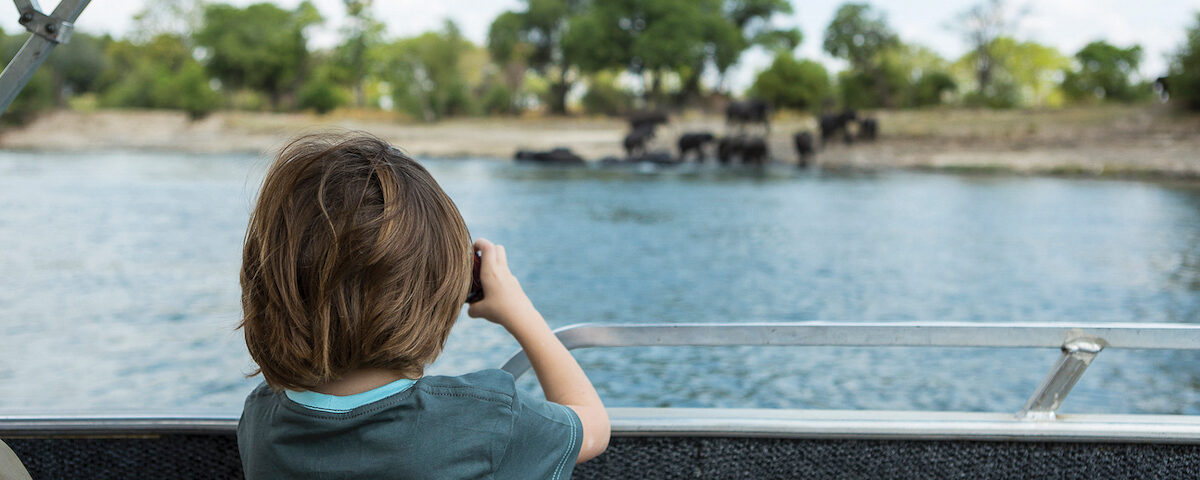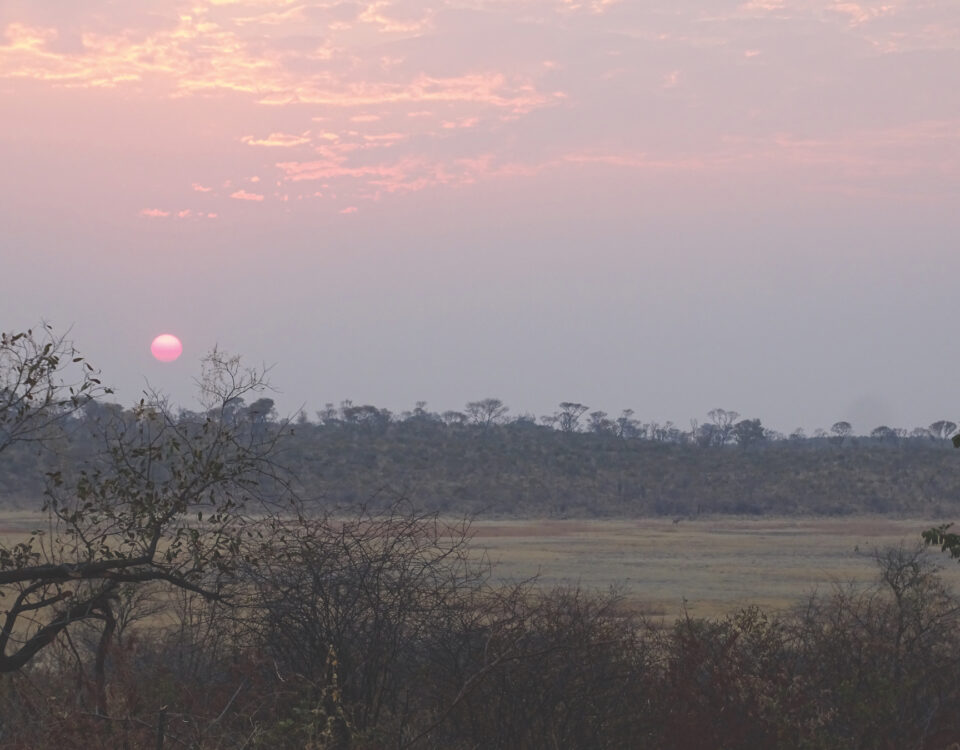Gudrun Heger’s words, spoken at the 2022 Namibia Professional Hunters Association (NAPHA) conference, pierced the air like a ringing bell: “Namibia’s treasure is nature!” she exclaimed to the attentive audience. Gudrun Heger’s status with the Nature Awareness Project and NAPHA is layered. She is chairperson of the Hunters Support Education Committee, which incorporates the Nature Awareness Project (NAP) within the NAPHA organisation. Michael G. Sabbeth
A few words about NAPHA provide valuable background and context for the importance and mission of the NAP. NAPHA advances the proposition that sustainable trophy hunting is inherent in conservation. NAPHA notes that Namibia is one of the leading countries in Africa in terms of nature conservation.
The number of animals as well as their diversity has doubled since the 1960s. NAPHA’s website claims that seventy to eighty percent of all wild animals in Namibia are found on private land, which the association attributes to the trophy hunting industry. NAPHA’s mission is to ensure and promote ethical conduct, sustainable utilisation of natural resources and to secure the industry for current and future generations.
A brief history of the Nature Awareness Project begins in 2014, when Isabelle Fourie created and initiated a project titled Back to Nature. Outdoor activities, ventures and lectures were hosted by Isabelle for dozens of children from the Waldorf School Windhoek, to advance educating them about nature, and how the now-fashionable phrase “sustainable use” is applied to wildlife, fauna, and flora. In 2019 the Hunters Support Education committee, under the umbrella of NAPHA, took Isabelle’s project under its umbrella, renaming it Nature Awareness Project.
The overarching mission or vision of these programs was, as Gudrun explained, “instilling respect for nature,” which she views as “Namibia’s treasure.” These programs expanded, gained vitality and funding, and became unified as a discrete entity renamed the Nature Awareness Project.
The Nature Awareness Project boasts multiple ambitious goals and employs several social media channels and practical excursions to engage youngsters with Namibia’s natural environment. These goals are attained through education programs, mental discipline within a framework of ethics, respect for nature, and self-discipline. An additional component of the cultivated ethos of valuing nature, a component that may be unique to Namibia, is the focus on Namibia’s constitutional foundation for the ethical and legal commitment to “sustainable use” and nature’s long-term viability.
Apart from justifying the ethos of its mission, the intellectual and legal legitimacy of NAP’s work is enhanced by Namibia’s constitution. Namibia adopted its constitution in 1990. Relevant to this discussion, Chapter 11 defines the Principles of State Policy. Article 95 is part of that Chapter, which contains provisions on the Promotion of the Welfare of the People.
The actualising provision that gives vitality and vibrancy to wildlife conservation and the validation of NAP’s work and mission is the directive that the State shall “actively promote and maintain the welfare of the people by adopting, inter alia, policies aimed at the following: Section l: maintenance of ……. biological diversity of Namibia and utilisation of living natural resources on a sustainable basis for the benefit of all Namibians, both present and future.”
As implied in the constitutional provision quoted above and well-known by the dedicated NAP team, the sustainable basis for wildlife conservation cannot be implemented if wildlife and fauna no longer exist to be sustained.
Even a casual visit to the website of the Nature Awareness Project illustrates the various platforms used to implement its goals. A non-exhaustive list of these platforms and practices includes the use of digital platforms and educational videos; the prime importance of taking children on educational outings; teaching the practical application of “sustainable use” through a broad spectrum of ventures and outings; introducing children to the vast diversity of Namibia’s wildlife within the framework of teaching respect for their existence and their value to the ecological chain wildlife.
Of course, problems arise because the younger generation lacks awareness and education pertaining to nature and natural resources. Also, as Gudrun stated, mainly due to urbanisation an increasing number of Namibians have little to no understanding of what conservation is all about. However, these problems are hardly monopolised by Namibia, they are universal.
Gudrun elaborated on the synergistic quality of the children’s engagement with nature by noting that when participating in the NAP projects, the children “are creating their conservation values while inspiring each other.”
Breathing life into the Nature Awareness Project’s vision of Taking us back to nature requires hard work: the effort of organising ventures and the patience and lucidity of language to explain nature and admittedly complex concepts such as “sustainable use” to young audiences. As evidence that NAP has mastered these skills, Gudrun shared in her NAPHA presentation examples of the positive feedback from the project’s ventures and directed the audience to the successful messaging for youth that permeates the videos embedded on NAP’s website.
The voices of the children who have participated in its programs illuminate most eloquently NAP’s ability to engage and inspire them to be nature’s stewards. For example, a young girl’s expression of joy derived from participating in one of NAP’s educational ventures becomes a metaphor for NAP’s vision to enrich other youth. The young student articulates her gratitude for her good fortune by astutely observing that “many children in cities never have the chance to get out in nature or touch animals like a horse.”
Feeling empowered, children have effused that they “feel proud that they can help nature.” An illustration of the power NAP bestows on youngsters is illustrated by a student’s comment: “Now I have learnt that I can make a difference and make the world better.” Their insights into nature and the ecosystem can be quite basic, as can be seen in this student’s poignant educational moment: “I learnt today the value of water and that we must save it because people, animals and plants cannot live without it.”
Students have commented on how they learnt to safely make a fire, identify different game animals and their tracks and, in one distinctly earthy example, a student commented proudly on his new-found ability to “identify animal dung.”
The NAP was founded in response to the reality that a high percentage of Namibian children are unfamiliar with the local fauna and flora and the sustainable use of wildlife and conservation. For those youngsters whose lives have been touched by the NAP programs, the results of their education and inspiration will resonate like a violin string across generations.
Whether the projects and excursions teach about milking cows or building a sustainable garden or learning about the value of snakes in the balance of the environment and the use of their venom for the pharmaceutical industry to save human lives – every moment, every lesson, every seemingly disconnected fact is linked to the unifying themes of causality, duty, consequences and nature’s fragility. Things happen or don’t happen for identifiable reasons. What we had yesterday is not guaranteed for tomorrow and will not be sustainable unless knowledge, moral will and hard work are devoted to maintaining and improving the environment and the lives of its inhabitants.
Gudrun said at NAPHA that “education is the only way to protect nature.” However, if one listened closely to her words, it can be discerned that Gudrun advocated a greater reach than education.
Gudrun articulated the reality that more than education is needed to protect nature. Many people, highly educated and highly informed, do nothing to protect nature or advance conservation. Many people are aware of nature’s frailty but do nothing to protect it. Education and awareness are necessary but insufficient to guide the stewarding of nature.
At the conference, Axel Cramer, president of NAPHA, emphasised to me that “education is not enough. Awareness is not enough.” Axel’s assertion may seem counterintuitive since “awareness” is the middle word descriptor in the organisation’s three-word title. However, from a practical realpolitik perspective, Axel is correct. Possessing awareness without taking action is morally and practically meaningless. Axel insightfully exclaimed, “Awareness is not the end goal of the NAP but the beginning. Awareness is just the jumping-off point.” Perhaps the organisation should be renamed Nature Action Project, for only through action will respect for nature be brought to life and the sustainable use of wildlife, flora and fauna will be realised.
Tim Fallon, president of the Dallas Safari Club, was a guest at the 2022 NAPHA conference. Tim shared with me his summarisation of Gudrun’s presentation with the following prescient observation: “Gudrun effectively captured the truth that if you want a vibrant future for wildlife, you have to work now to create the future you want. Virtuous futures don’t happen by accident.”
Of course, as the staff of the NAP acknowledge, these children will be tomorrow’s leaders and only through knowledge will they be able to face future challenges. But in conversations with me, both Gudrun and Axel acknowledged that in addition to awareness and education, the characteristics of motivation, the will to act, moral courage and competent diligence are needed to attain NAP’s goals.
Abstract philosophy and good intentions must be translated into tangible action if virtuous goals are to be achieved. Under the sterling leadership of the NAP Team – Gudrun Heger, Barbara Rogl, Isabelle Fourie and Nadja Geiger – the organisation has become the vehicle for transforming awareness into action. Worth noting is that the Nature Awareness Project team does everything on a voluntary basis. No salaries are paid. Thus, donations are welcome. In 2022, the NAP team received the NAPHA award for Most Active Member for the 3rd consecutive year.
The NAP instils a sense of duty, a sense of obligation, a sense of stewardship in the young students. Significantly, Gudrun and the NAP team inspire the youngsters to see that they are part of something larger than themselves; that knowledge plus hard work and self-discipline give meaning and depth to life, which are the transcendent indicators of a life well lived. The NAP enables youngsters to weave themselves into one rich tapestry unifying their efforts, their country, their Constitution and Namibia’s abundant wildlife and flora. Congratulations to the Nature Awareness Project, for it helps Namibia to blossom into a greater life force.



